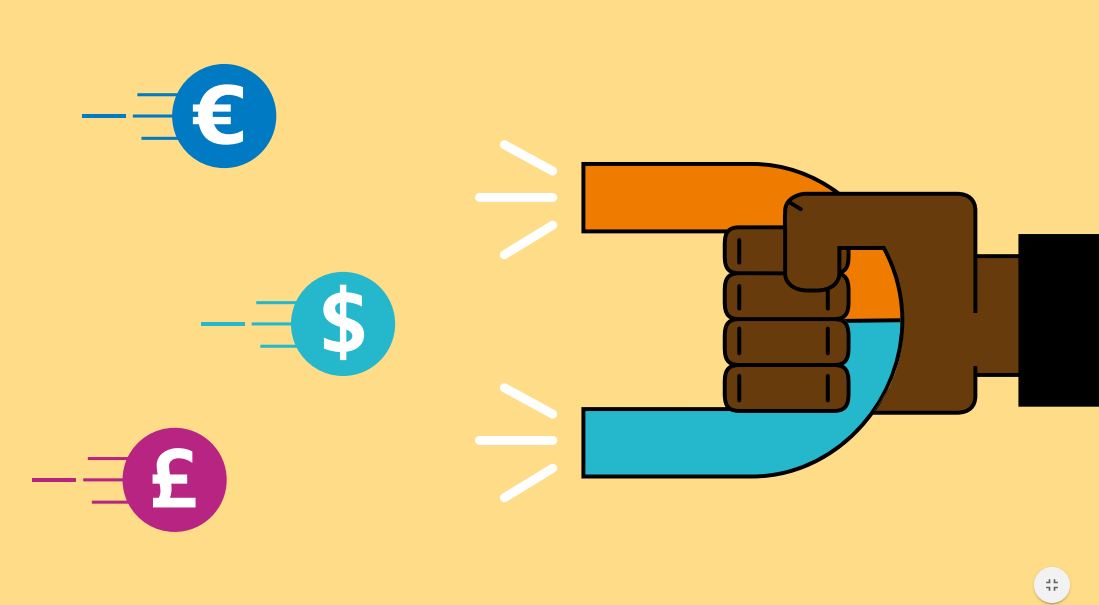Nothing is free

Digitization has a tremendous impact on the conduct and the economics of business as it has the power to transform virtually every step in the value chain of almost every industry. Most visibly to the public, digitization has transformed consumer software in video and content-related industries including publishing of text, music, and videos. In particular, long-established pricing schemes are being overturned by distributing content in a digital fashion via the internet and through mobile applications (apps). Digital content and products more generally are characterized by a high cost to produce the first copy or version. The marginal cost of (re)production and distribution then tend to be close to zero, however. This particular cost structure has given rise to freemium business models, i.e., hybrid pricing schemes that combine the virtues “free” and “premium”: customers are allowed to use a basic version of a product for free without any time restriction but have to pay an access fee if they want to access premium features.
Freemium is ubiquitous
Freemium business models are appealing to consumers. Compared to the traditional buy/ sell system model, freemium allows consumers to sample a product not only for a limited period (as test versions in the buy/sell model typically do) but perpetually.
The exact specification of freemium pricing schemes depends on the product context and different examples abound. Media companies frequently implement freemium models to monetize their content on the internet. In 2011, the New York Times moved from publishing their content online for free to a freemium business model using paywalls; users exceeding the limit of 20 articles per month were required to pay for a subscription. Voice-over-IP (VoIP) services such as Skype offer VoIP calls for free but charge for premium features such as voicemail, messaging, or calling (mobile) phones. Cloud-based data storage services such as Dropbox offer a limited amount of storage for free but charge subscription fees for increased volumes. In 2015, Microsoft released apps of its MS Office Suite that allow consumers to use a set of features for free while access to the full functionality requires a subscription.
Freemium also is ubiquitous in gaming where users are allowed to play a certain amount of levels for free while additional levels and other in-game items have to be purchased. Recent statistics indicate that freemium accounts for 95 percent of Apple App Store revenue and 98 percent of Google Play Store revenue. The “app economy” – defined as all business activity on different app stores – is expected to reach a volume of 100 billion USD by 2020.
From a company perspective, going freemium can be an effective strategy for customer acquisition and the monetization of their digital products: Free features are a powerful marketing tool and often allow companies to attract new users and scale-up novel services or products without devoting large budgets to ad campaigns.
More than pricing
Despite this obvious appeal, freemium models are still poorly understood. Many firms find it challenging to implement a specific design of a freemium model, which is maximizing the business impact of their product. In contrast to the already challenging task of setting a price that maximizes profits or revenues in traditional business models, freemium requires firms to make more decisions simultaneously.
In fact, setting up freemium business models requires companies to carefully consider three main parameters: one, how much (and what) to give away for free; two, how much to charge for premium features; and, three, how to design the product so that existing users attract novel users. Complicating matters, companies need to find answers to these three key questions simultaneously because they interact with each other.
How much should we give away?
A crucial choice in any freemium model is the selection of features – how many and which – to give away for free. More free features make a product more appealing and attract more users, which is particularly important in situations where companies seek to quickly scale up their product and acquire a large user base in a short period.
Increasing the number of free features, on the other hand, typically reduces conversion rates. Conversion in this context refers to converting free users into paying customers; the conversion rate is the number of free users that upgrade to the premium version. As advertising has become a negligible source of income in most freemium business models, customers of the premium version are the most important (if not the only) source of income. This makes the conversion rate a key metric in the design of freemium models.
Typically, conversion rates for internet-based products and services range between 1.5 to 5 percent of all users. Giving away more free features can reduce this already low rate even further.
How much should we charge?
In addition to differentiating free features from premium ones, firms have to set a price for those premium features. As in conventional business models, higher prices reduce conversion rates but increase profit per freemium user. In some cases, setting a price for premium features is equal to setting one global price (for instance, if the payment of a subscription fee allows users to access all premium content) but can also amount to setting a bundle of different prices if different premium features are sold separately. For instance, Skype is selling various premium features including voicemail, unique phone numbers, and different calling rates separately as well as in bundles.
How do we leverage free users?
In a freemium world, companies have to learn not to consider free users as free riders. Rather, they have to be strategic to harness the value of consumers who like their product even if they have not been converted to premium customers (yet).
A large base of free users can deliver value to a freemium model primarily via two channels. On the one hand, having a large base of active users increases a product’s chances to be listed in the “most popular” or “most downloaded” ranking of app stores. A listing in these rankings is of high value as it almost automatically boosts the number of new users that discover a product by browsing these lists. “Most popular” rankings hence bring in new users at zero cost. On the other hand, existing (free) users often recommend a product to their peers who then try it out. Again, this allows companies to acquire new users at zero cost. So existing users bring in new users – some of which have the potential to be converted into premium customers. Many successful freemium models include built-in reward mechanisms that create an incentive for existing users to recommend a product. For instance, Dropbox rewards existing users with additional free storage space if they attract new users to the service.
Solving the freemium puzzle
When designing freemium models, companies must take into account how those three parameters interact with each other. First, giving away more features for free increases the attractiveness of a product per se and facilitates the initial acquisition of (free) users. This can create a virtuous cycle: a larger base of free users is likely to attract more new users via recommendation or “most popular” listings. This, in turn, leads to a bigger user base, which attracts even more new users – all of which can potentially be converted into premium users.
Second, rewarding free users for attracting new users nurtures the virtuous cycle. However, giving too many rewards might crowd out conversion. For instance, Dropbox observed users to strategically acquire novel users in order to increase their amount of free storage and to avoid upgrading to the premium version.
Third, increasing the number of free features reduces conversion rates as a larger share of existing users will be able to satisfy their needs by relying on free features exclusively.
Finally, the price set for premium features interacts with conversion rates (higher prices reduce conversion), user acquisition (higher prices reduce the likelihood to attract free users), and the chances that existing users attract novel users for free (higher prices have been found to lower recommendation rates of a product to peers).
Experiments drive results
To date, there is only sparse academic literature that can offer guidance to a structured or even analytical approach of finding profit-maximizing designs of freemium models. Most successful companies approach the challenge of designing freemium business models in a data-driven manner by testing different parametrizations of freemium models in experimental settings. Users are randomly allocated to versions of freemium designs that differ only in one respect. Comparing relevant outcome measures, most importantly conversion and recommendation rates, allows companies to identify specific designs that work better than others. This approach is well known as A/B testing. Most often, a single A/B test will not do. Successful freemium designs are refined over time by running a whole sequence of multiple experiments.
Case-study evidence from video gaming
In order to demonstrate the benefits of an experimental approach to freemium design, we analyzed data from an A/B test conducted in collaboration with a Berlin-based provider of video games for mobile phones and tablets. In our experiments, a total of about 300,000 users of a highly successful video game were randomly assigned to three different versions of freemium designs. Compared to the default design originally implemented by the company, we varied the number of free features (the number of levels users can play without paying) in one test scenario. In a second test scenario, we varied the rewards for attracting novel users.
A statistical analysis of how the 300,000 players used the game over a 14-day window allowed us to identify how different freemium design choices affect important outcomes including conversion rates and the number of new users attracted. Our analyses provided clear evidence that – in this specific example – conversion rates could be significantly increased (by more than 20 percent) by offering fewer features for free without negatively affecting existing users’ efforts to attract novel users. This example highlights how experiments can help to optimize freemium models based on hard evidence rather than assumption or “guesstimation.”
Stefan Wagner Associate Professor of Strategy and Director of PhD Studies, ESMT Berlin
Julian Runge is a Ph.D. candidate in business economics at Humboldt University Berlin, Germany, and was a visiting doctoral researcher at Stanford’s Graduate School of Business in 2016 and in 2017. Prior to his Ph.D., he headed the analytics and data science team of Wooga, a Berlin-based mobile game developer. His research focuses on consumer behavior in technology products, related strategic choices of firms, and predictive modeling.

